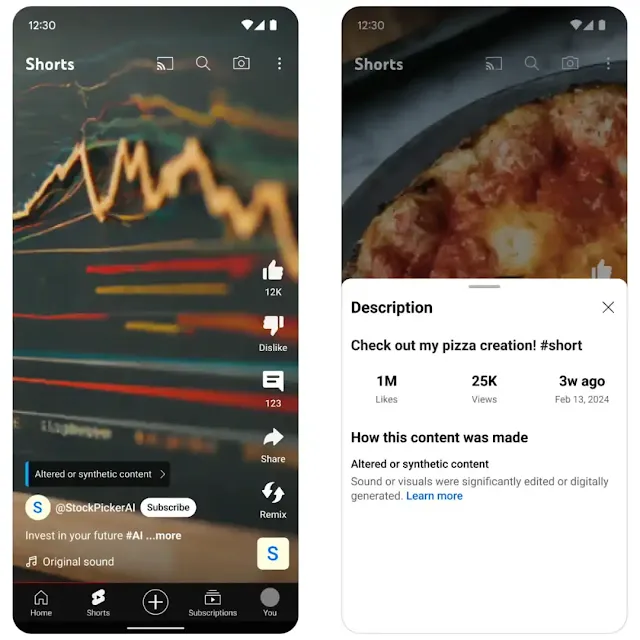YouTube Introduces Tool for Labeling AI-Generated Content in Videos
YouTube has unveiled a new tool designed to boost transparency and
build trust between creators and viewers on the platform. This tool will
require creators to disclose when their videos contain content created or
altered using artificial intelligence (AI) that could be misconstrued as real.
.webp) |
| YouTube image |
What Needs Disclosure?
The new disclosure tool focuses on content that leverages AI to create
realistic scenes, people, or places that viewers might mistake for genuine
footage. This could include:
 |
| YouTube disclosure on AI-generated content |
- Videos that digitally alter the likeness of a real person.
- Videos that manipulate real events or locations.
- Videos that use AI to create scenes for fictional purposes, but appear very realistic.
There are some exceptions to the disclosure requirement. Creators won't need
to disclose the use of AI for productivity tools, such as automatic script
generation or caption creation. Additionally, minor changes or clearly
unrealistic content also fall outside the disclosure requirement.
Where Will Labels Appear?
The labels generated by the disclosure tool will be progressively rolled out
across YouTube on various platforms and formats. Typically, these labels will
appear in the description section below the video. However, for videos that
address sensitive topics like health or news, the labels will be more
prominent, appearing directly on the video player itself.
 |
| AI-generated content labels |
Implementation and Enforcement:
The rollout of the disclosure tool will be gradual across YouTube. This
timeframe is intended to provide creators with an adjustment period. However,
YouTube has plans to enforce disclosure measures in the future. In cases where
creators consistently fail to disclose the use of AI for realistic content,
YouTube may take action, including adding a label themselves, especially if
the content has the potential to mislead viewers.
YouTube is also working on an update to its privacy process. This update will
allow individuals to request the removal of AI-generated content or other
synthetic media that replicates an identifiable person, including their voice
or face. More details about this specific process will be announced by YouTube
soon.
Commitment to Transparency:
YouTube is actively involved in industry-wide efforts to promote transparency
when it comes to digital content. This includes their participation as a
leading member of the Coalition for Content Provenance and Authenticity
(C2PA), which reflects their dedication to fostering a more genuine and
transparent online environment.
The disclosure tool will first be available on the YouTube mobile app,
followed by desktop and TV versions.
In a statement announcing the update, YouTube emphasized the essential role
creators play on the platform and their ongoing commitment to guide viewers
through the evolving landscape of generative AI. YouTube acknowledges the
dynamic nature of this field and their dedication to continuous learning and
improvement. They believe that increased transparency will lead to a deeper
understanding of how AI can be harnessed to empower human creativity.